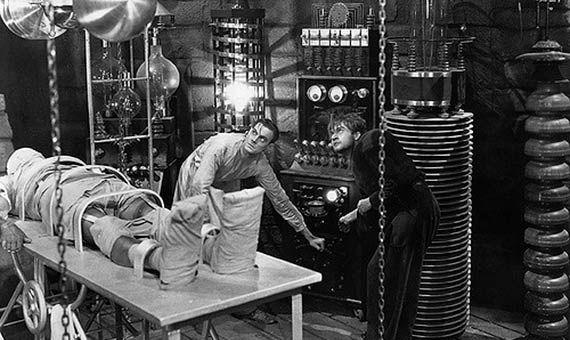The rainy summer of 1816, in a village near Lake Geneva, north of the Alps, inspired the British writer Mary Shelley (August 30, 1797 – February 1, 1851) to write what is considered the first science fiction book—Frankenstein or the modern Prometheus (1818).
In the novel, the medical student Victor Frankenstein creates a new being by combining different parts of corpses. Two centuries later, the idea remains pure fiction, although in many laboratories experiments are being carried out with chimeras, animals that contain the organs of different species. The goal is to generate tissues and organs that can be transplanted into the human body.
Human cells in pig embryos
In Ancient Greece, the term chimera described a mythological creature. Today, in biomedicine, a chimerical organism is a being where elements with different genetic origins and identities are combined. At the Salk Institute for Biological Studies (USA), scientists have succeeded in inserting human stem cells into pig embryos during the early stages of their development. In addition, they have generated rat organs such as pancreases, eyes or hearts in healthy mice.

“These chimeras will be very useful tools for understanding basic biological issues such as development and evolution, and may have potential for understanding human diseases and providing tissues or organs for transplants,” Salk Institute researcher Jun Wu tells OpenMind.
In the case of human stem cells inserted into pig embryos, scientists stopped the experiment at four weeks’ gestation to evaluate the safety and efficacy of the technology. Some of the embryos showed that human cells had specialized and become precursors of different tissues, although the success rate and contribution of human cells in pigs was much lower than in rats and mice.
According to Wu, the greatest difficulty in generating these new beings is the barrier between species, that is, the many divergences they present, ranging from timing differences in the rate of development to genomic differences. “We need to understand more about these differences before we can efficiently generate interspecific chimeras among evolutionarily distant species,” Wu stresses.
Mice free of diabetes
In the laboratory of Stanford University (USA) led by the geneticist Hiromitsu Nakauchi, researchers have successfully developed mouse pancreases grown inside rats, which generate insulin-producing cells that can reverse diabetes when the organs are transplanted into mice with the disease.

The researchers used pluripotent mouse stem cells—capable of transforming into any type of tissue—in the early stages of the rat embryo. Scientists hope the technique can be used to transplant human organs grown in larger animals.
“For the generation of these organs we use sheep and pigs because the size and physiology of the organs are similar to humans,” Nakauchi tells OpenMind. The geneticist recognizes that it is not an easy task, mainly due to the great evolutionary distance between these two species and us. To give an example, the gestation periods vary between 300 days for humans to 114 days for pigs and 150 for sheep.
“These differences are much greater than those that exist between mice and rats and could affect how cell growth signals are expressed and received between the cells of the two species. A lot of work remains to be done,” says Nakauchi.
The red lines of chimeras
Developing organs for transplantation would also open the door to other applications, since they could be used to study diseases, serve as therapeutic models and could be used for toxicological studies.

This research area, while full of possibilities, is not free of ethical dilemmas. Is there a red line at the time of ‘crossing’ different species? John De Vos, director of the Department of Cellular and Tissue Engineering at Montpellier University Hospital (France), enumerates some limits for OpenMind. In the case of human cells injected into the embryo of another animal, the first red line would be the humanization of the animal brain. “It would not be ethical to create an animal with a partial or complete human brain,” De Vos says.
Another limit would be to produce human gametes in the other species and to humanize their appearance, that is to say, if the animal had hands or feet instead of paws or hooves, or a human face and voice. In the opinion of the scientist, as long as these lines are not exceeded, it is ethical to create human organs in animals like pigs to treat diseases.
However, before the technique is used safely, De Vos warns that some questions must be resolved, such as immunological problems, zoonosis issues—diseases transmitted from animals to humans—or that human organs generated in animals must be essentially pure, and not a mix of species.
Laura Chaparro
Comments on this publication